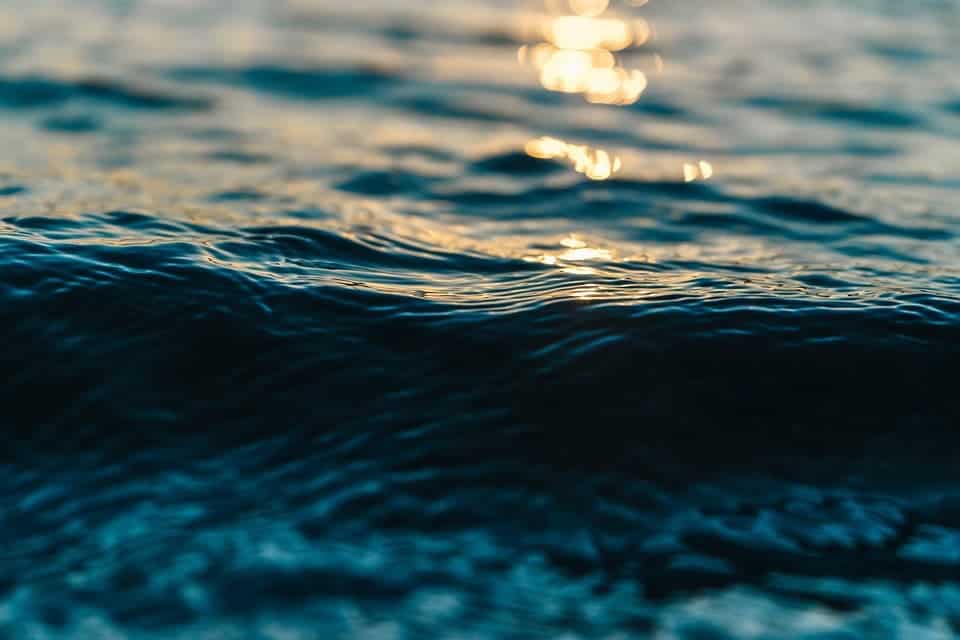As oceans warm up due to climate change, they’ll likely start generating a lot of CO2.

Despite being the largest carbon sink active today, oceans might become net emitters under warmer climates, a new study reports. The paper reports that warmer oceans lose some of their ability to store carbon, which will accelerate the rate of CO2 regeneration in many areas of the world. This will further reduce the ocean’s ability to store carbon, the authors explain.
Positive carbon loop
“The results are telling us that warming will cause faster recycling of carbon in many areas, and that means less carbon will reach the deep ocean and get stored there,” said study coauthor Robert Anderson, an oceanographer at Columbia University’s Lamont-Doherty Earth Observatory.
Ocean water soaks up roughly 25% of our carbon dioxide emissions year after year. While this process also involves abiotic chemical and physical processes, the lion’s share of that CO2 is gobbled up by plankton through photosynthesis. But, all plankton must die eventually, and when they do, these tiny marine plants sink to the bottom of the ocean — and the carbon they ‘ate’ goes down with them. It’s estimated that plankton produces around 40 to 50 billion tons of dry, solid organic carbon each year.
Some of this organic matter (and the carbon therein) gets locked into the depths for centuries at a time, but part of it gets consumed by aerobic bacteria before sinking into oxygen-free waters, the team writes. Those bacteria then expel it as carbon dioxide, pushing it back into the atmosphere. Only about 15% of plankton-derived carbon sinks to the bottom of the sea, the authors estimate. They further report that the environmental conditions that allow bacteria to recycle carbon are spreading as water temperatures rise.
The team used data from a 2013 research cruise from Peru to Tahiti. They focused on two distinct regions: nutrient-rich, highly productive waters off South America, and the largely infertile bodies of water that form the South Pacific Gyre. Instead of using traditional sampling methods — simple devices that trap particles as they sink — the team pumped large amounts of water from different depths and isolated particles and thorium isotopes. This approach allowed them to calculate the quantity of carbon sinking at different depth intervals, they explain, and much more reliably so — the technique yielded far more data than the traditional traps.
Deeply worrying
In the oxygenated upper waters layers off South America, the team reports, oxygen gets used up very quickly. It is consumed completely at about 150 meters of depth, halting aerobic activity. Organic matter that reaches this layer (called the oxygen minimum zone, OMZ) will sink to the bottom of the ocean. In the depths, oxygen levels do increase again, and aerobic bacteria start breaking down organic matter. However, any CO2 produced down that far will take centuries to get back into the air via upwelling currents.
The OMZ thus forms a sort of protective cap over any organic matter that sinks past it, according to the team. The common wisdom of today, held that organic matter produced near the surface makes it through the OMZ, and that most CO2 regeneration takes place in the deep ocean. However, only about 15% of this matter sinks past the OMZ, the team shows.
“People did not think that much regeneration was taking place in the shallower zone,” said the study’s lead author, Frank Pavia, a graduate student at Lamont-Doherty. “The fact that it’s happening at all shows that the model totally doesn’t work in the way we thought it did.”
As mean water temperatures in the ocean increase, OMZs will spread both horizontally and vertically, covering larger areas of ocean at shallower depths, the team estimates. At the same time, higher temperatures will drive bacterial activity above the OMZs. On one hand, this would allow more organic matter to sink undegraded into the deep. However, the increased rate of CO2 regeneration near the surface will counteract this increased trapping, the team says. Whether near surface regeneration or the cap provided by the OMZ might have a stronger effect is still something we need to look into, they explain. However, this shift in OMZs is definitely not good news, as they are not at all suitable for most marine life — and this shift will affect a lot of today’s key fishing areas.
In the South Pacific Gyre, the results were less ambiguous. There is far more regeneration near the warmer surface than previously estimated in this area. The South Pacific Gyre and similar current systems in other parts of the oceans are projected to grow as the oceans warm. The gyres will divide waters into warmer layers (on the surface) and colder ones (deeper down). Because much of the CO2 regeneration will take place in the warm, shallower waters, CO2 regeneration will pick up over wide spans of ocean, the team explains. And, unlike below the nearer-shore OMZs, “there is no counterbalancing effect in the gyres,” said Anderson.
“The story with the gyres is that over wide areas of the ocean, carbon storage is going to get less efficient.” (There are four other major gyres: the north Pacific, the south and north Atlantic, and the Indian Ocean.)
These are only parts of the ocean carbon cycle, the team notes. Abiotic reactions are responsible for significant exchanges of carbon between atmosphere and oceans, and these processes could interact with the biology in complex and unpredictable ways.
“This [the study] gives us information that we didn’t have before, that we can plug into future models to make better estimates,” said the study’s lead author, Frank Pavia, a graduate student at Lamont-Doherty.
The paper “Shallow particulate organic carbon regeneration in the South Pacific Ocean,” has been published in the journal PNAS.






